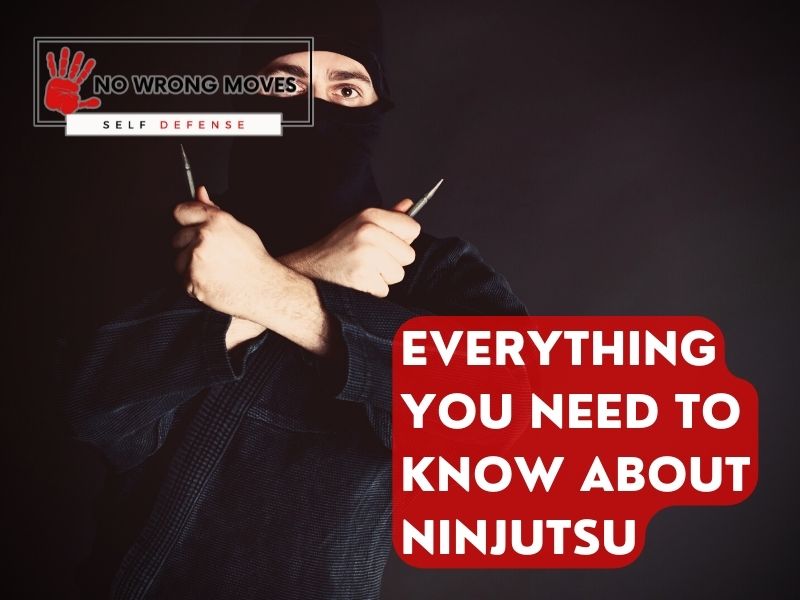
- What is Ninjutsu?
- Where Does Ninjutsu Come From? What’s The Story?
- Benefits of Ninjutsu
- How to get started in Ninjutsu
- What To Expect In Your First Ninjutsu Class
- Different Ninjutsu Ranks, Levels, and Ranking System
- Ninjutsu Techniques
- The Importance of A Good Ninjutsu Instructor
- Some Movies With Ninjutsu
- Most Notable Figures In Ninjutsu
- The Wrap-Up
Ninjutsu, the ancient Japanese art of the ninja, has long captivated people with its mysterious and legendary reputation. But what is Ninjutsu, really?
In this article, we'll delve into everything you need to know about this fascinating martial art, from its origins to modern-day practice.
And don't worry, you can be a curious beginner or a seasoned practitioner. You're still sure to discover something new and exciting about Ninjutsu. So with that, let's get started!
What is Ninjutsu?
Ninjutsu, also known as ninpō, is a martial art that focuses on unconventional warfare, guerrilla tactics, and espionage. It is said to have been practiced by the ninja, and was taught as a separate discipline in some traditional Japanese schools.
Along with taijutsu, students would also study shurikenjutsu, kenjutsu, sōjutsu, bōjutsu, and other martial arts.
Despite the existence of an international martial arts organization that represents multiple modern styles of ninjutsu, there is much debate surrounding the historical lineage of these styles.
While some schools claim to be the only legitimate inheritors of the art, ninjutsu lacks the centralized structure found in modernized martial arts, such as judo or karate.
Among these schools, Togakure-ryū is recognized as the oldest recorded form of ninjutsu, with claims of having survived beyond the 16th century.
Where Does Ninjutsu Come From? What’s The Story?
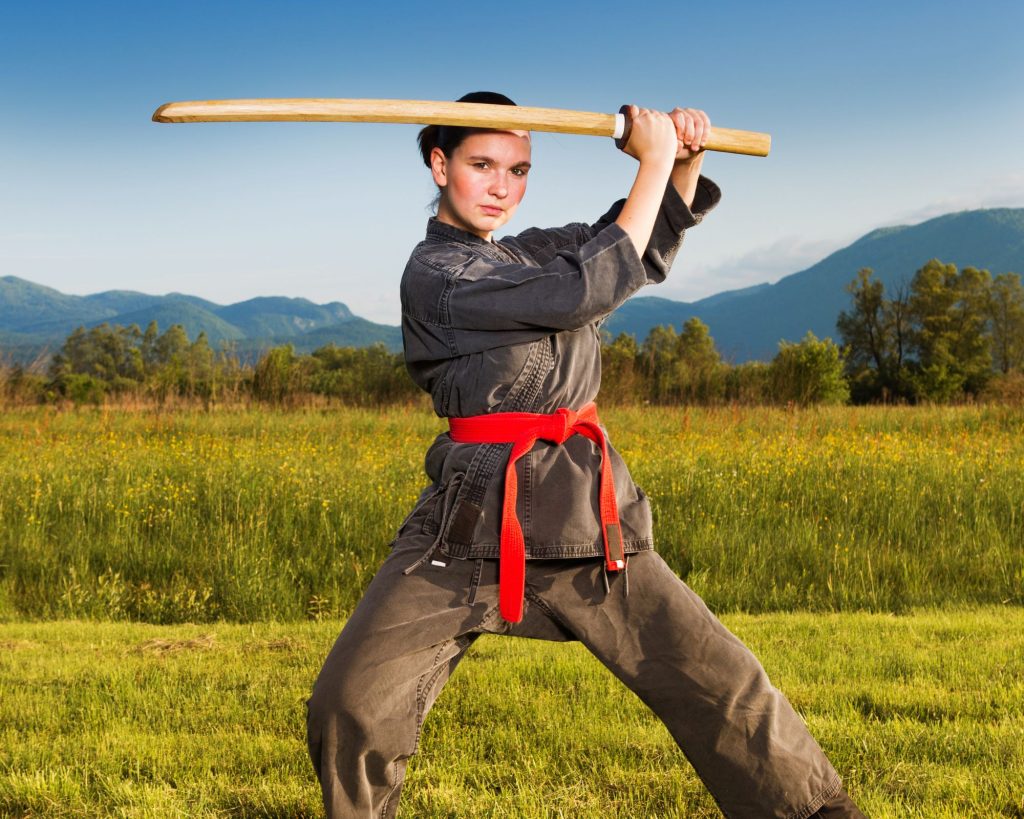
The origins of Ninjutsu are steeped in legend and mystery. It is said that the art was first developed by a group of refugees who fled to Japan from China in the 12th century.
These refugees were experts in various martial arts and espionage techniques, and they eventually combined their skills to form the art of Ninjutsu.
Ninjutsu quickly became popular among the samurai classes, and it was used extensively in battle and espionage operations. Ninja were feared and respected for their skill and versatility, and they played a vital role in many historic battles and campaigns.
Ninja were trained from a young age, mastering 18 traditional disciplines that included armed and unarmed combat techniques The methods used by these Ninja were not looked upon kindly, being seen as dishonorable, and they were often hired primarily for "dirty" jobs.
During the 19th century, the art of Ninjutsu was nearly extinct, as dishonorable ways of combat were no longer necessary. Some masters, however, kept the secret art alive and passed it down to create what is now known as modern Ninjutsu.
Although, the actual period Ninja disciplines and techniques were closely guarded, and today's modern Ninjutsu will vary from school to school.
They will most likely be a watered-down version or a take on the original traditional way, and they will no longer focus on stealth and assassination techniques.
Like many old martial arts, Ninjutsu has developed into various styles, and numerous organizations and schools teach it.
Western culture became more aware of Ninjutsu through various movies during the 60s and 70s, although these movies often exaggerated the mysterious ways of the Ninja.
Over the centuries, Ninjutsu has evolved and changed to reflect the changing needs of the ninja. Today, it remains a powerful and versatile martial art, with a wealth of techniques that can be used for combat, espionage, or simply self-defense.
Benefits of Ninjutsu

First, you can improve your reflexes and coordination skills through the practice of ninjutsu. This ancient martial art focuses heavily on the body's response time to unpredictable situations, helping to sharpen your reflexes and coordination skills.
You won't even need to wait that long to see results. If you're disciplined and committed, you can see improvement as early as your first week!
Next up, calmness and confidence is one of the key factors in a person being able to defend themselves. Through the art of ninjutsu, you can increase your confidence in your abilities and as a person.
And with regular training, you can become strong and capable enough to handle almost any situation that may come your way.
Ninjutsu also requires focus and self-discipline, which can be taught by a professional instructor. With a consistent training schedule, you can cultivate the self-discipline necessary to excel in this ancient art.
And you won't have to worry too much about falling behind. With constant learning and by eagerly striving to improve, you can keep motivated and reach new levels of proficiency.
How to get started in Ninjutsu

To start your journey in Ninjutsu, it's crucial to research different schools that align with your goals and beliefs.
Once you've identified a few options, attend a trial class to get a feel for the school's atmosphere and instructors. It might be a bit of a hassle, but this step is essential in determining whether the school is a good fit for you.
Once you've found a school you feel comfortable with, it's time to begin learning the basics. A qualified instructor will guide you through the techniques, principles, and forms of Ninjutsu, providing a solid foundation for your practice.
Consistent practice is also paramount to improving your technique and understanding of Ninjutsu principles. This can include attending regular classes, sparring with other practitioners, and attending workshops and seminars to challenge yourself and gain new insights into the art.
Watching and studying Ninjutsu masters is another excellent way to gain inspiration and deepen your understanding of the art.
And don't forget, as with all things in life always approach your practice with humility and an openness to learning, recognizing that there is always room for growth and improvement.
What To Expect In Your First Ninjutsu Class
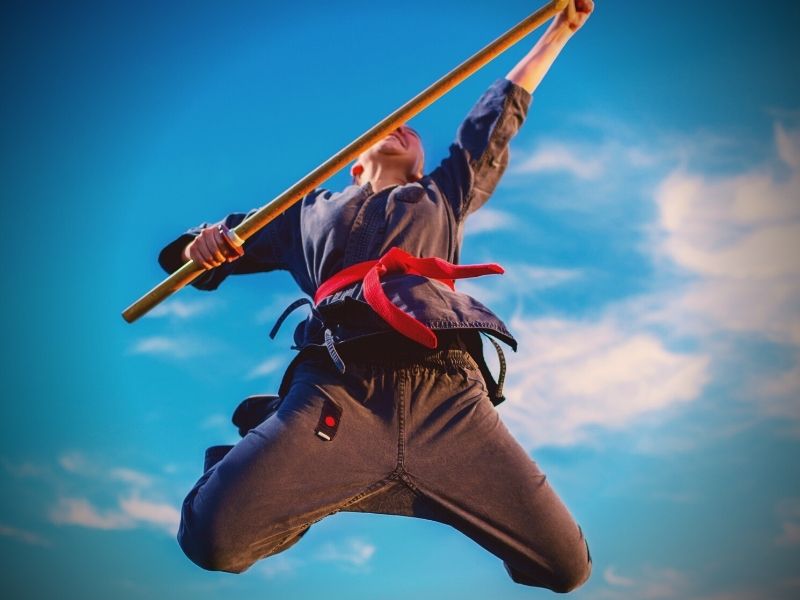
At your first Ninjutsu class, you may be surprised at how much there is to learn. Your instructor will start with warm-up exercises and stretches, before demonstrating various taijutsu strikes and koppo pressure point attacks.
You'll then have a chance to practice these techniques yourself, under your instructor's guidance.
In addition to physical techniques, you'll also learn about stealth and mental discipline. For example, you may practice shinobi iri, a ninja technique for moving silently and undetected.
As you progress in your Ninjutsu training, you may also begin working with traditional ninja weapons like swords or naginatas. Ultimately, the goal is to become a well-rounded warrior, able to adapt to any situation.
Different Ninjutsu Ranks, Levels, and Ranking System
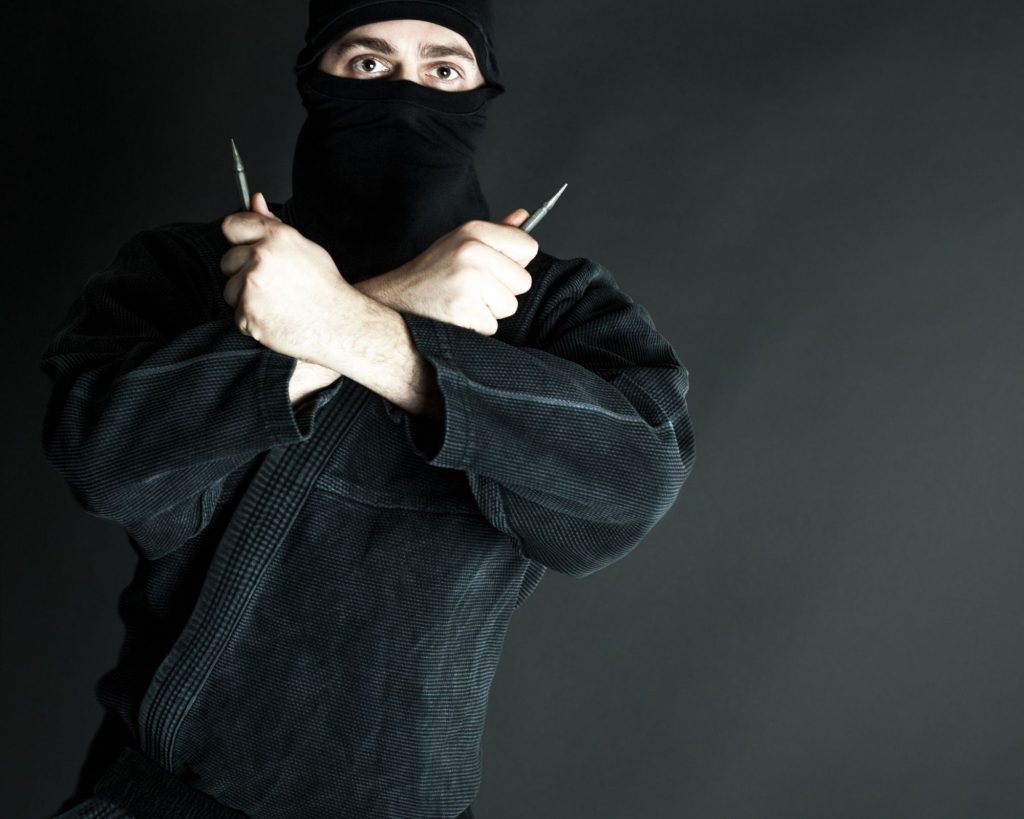
The Ninjutsu Kyu Rank System is a ranking system used in the martial art of ninjutsu. The system has nine ranks, with each rank corresponding to a level of ability. The ranks are as follows:
- Kyu 1
- Kyu 2
- Kyu 3
- Kyu 4
- Kyu 5
- Kyu 6
- Kyu 7
- Kyu 8
- Kyu 9
The Kyu 1 rank is the entry-level rank, and it indicates that the practitioner has a basic understanding of the art of ninjutsu.
The Kyu 2 rank indicates that the practitioner has a more advanced understanding of the art, and they can begin to learn more complex techniques.
The Kyu 3 rank is the beginning of the intermediate level, and it indicates that the practitioner has mastered some basic techniques and is able to start learning more complex ones.
The Kyu 4 rank is an advanced level, and indicates that the practitioner has mastered many basic techniques and is able to apply them in combat.
The Kyu 5 rank is an even more advanced level, and it indicates that the practitioner has mastered all basic techniques and is able to apply them in any situation.
The Kyu 6 rank is the beginning of the expert level, and it indicates that the practitioner has reached a high level of mastery over ninjutsu.
The Kyu 7 rank is an even higher level, and it indicates that the practitioner has mastered all techniques and is able to use them in any situation.
The Kyu 8 rank is the highest rank in the system, and it indicates that the practitioner has reached an unsurpassed level of mastery over ninjutsus techniques and strategies.
The Kyu 9 rank is a special rank, only given to ninjutsu masters who have trained for many years and achieved a level of mastery beyond the Kyu 8 rank.
Ninjutsu Techniques
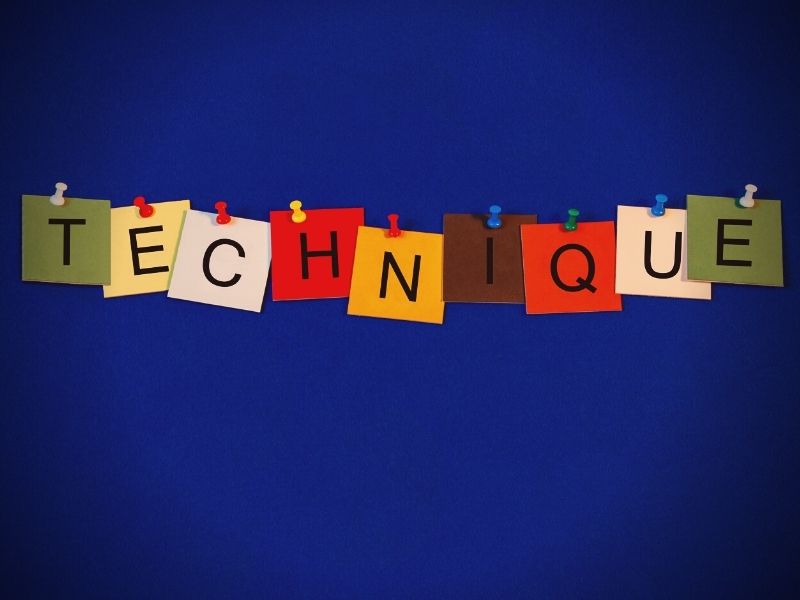
There are a variety of ninjutsu techniques that have been developed over the centuries by the Ninjutsu practitioners--far too many to reasonably list down in one go. You don't need to learn all of them off the get-go, but some of the things you'll see include:
Seishinteki kyōyō
Seishinteki kyōyō is the development and training of one's mind and spirit. This includes techniques for mental and emotional control, strategy, and even meditation.
Shinobi iri
Shinobi iri is the art of stealth and entering a location unnoticed. This includes sneaking up on something, camouflage, misdirection, and diversion tactics.
Taijutsu
Taijutsu is the art of hand-to-hand combat and body movements. This includes various punches, kicks, grapples, and throws. It can also incorporate the use of weapons, such as swords or staffs. In order to master taijutsu, one must train diligently in physical fitness and flexibility.
Bojutsu
Bojutsu stems around using long and flexible weapons, such as the staff or rope. These techniques can also be applied to non-traditional weapons like umbrellas or even broomsticks. In addition to physical training, bojutsu also requires precision and accuracy in aim and striking.
Kenjutsu
Kenjutsu is swordfighting. One will need to train extensively with a sword in order to become skilled in this technique, as well as learning proper form and stance.
Sōjutsu
Spear fighting, or sōjutsu, is a technique that incorporates the use of a spear or similar polearm weapon. This requires not only physical strength but also precision and agility in wielding the weapon.
Koppo
Koppo focuses on using pressure points to disable or injure an opponent. This can be used in conjunction with taijutsu or as a standalone technique.
Genjutsu
Genjutsu involves manipulating one's senses and perception, creating illusions and misdirection. This can be used in combat or for stealth purposes. This technique requires not only skill but also a strong control over one's own mind and emotions.
Naginatajutsu
Naginatajutsu centers around the use of the naginata, a polearm with a curved blade on one end. This technique requires strength and skill in wielding the weapon, as well as proper form and stance.
Kusarigamajutsu
Kusarigamajutsu is the art of using a kusarigama, a traditional ninja weapon consisting of a chain with a weight on one end and a blade on the other. This technique requires precision and accuracy in throwing and maneuvering the weapon.
These are just a few of the many techniques that have been developed and practiced by ninja throughout history. As with any skill, becoming an expert in any of these requires dedication and constant training.
The Importance of A Good Ninjutsu Instructor
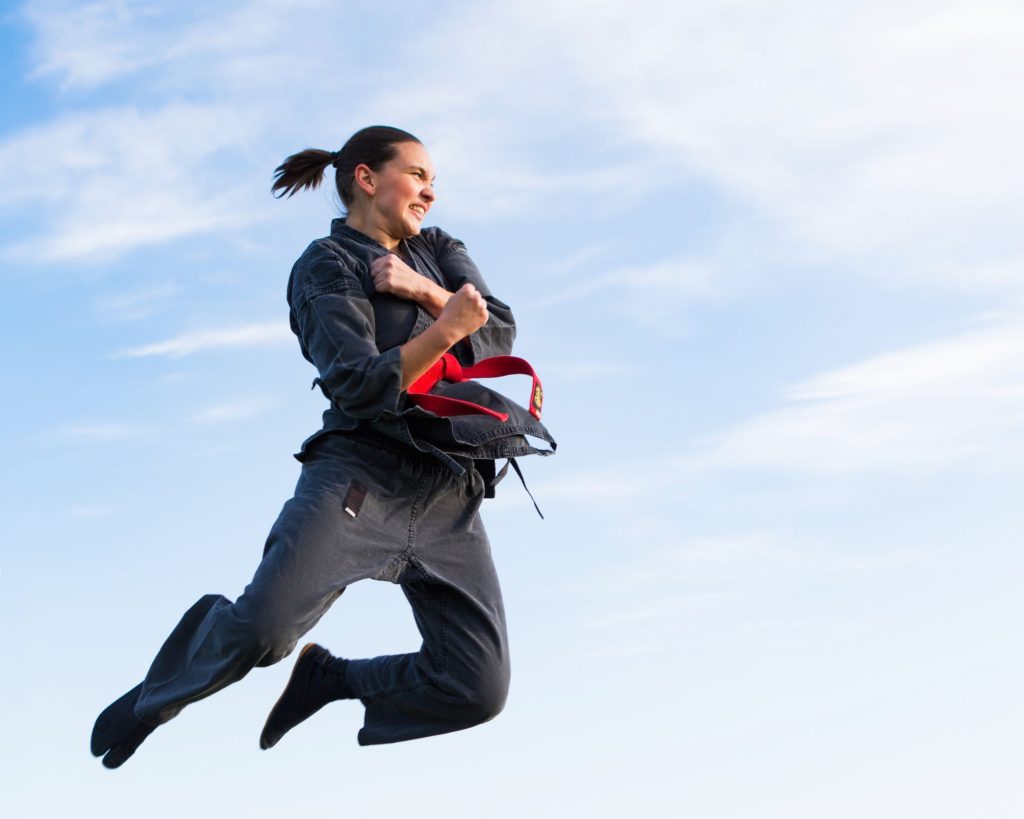
As with any martial art, it's crucial for you to choose the right Ninjutsu teacher when you first start learning. A good teacher will have a deep understanding of the techniques and principles of Ninjutsu and be able to communicate this knowledge to their students effectively.
They will also be able to adapt their teaching style to suit the individual needs of each student. In addition, a good teacher will be patient and supportive, and they will create a positive and encouraging learning environment.
We really can't overstate this. Choosing the right teacher is just that important for getting the most out of your Ninjutsu training, so take your time and do your research before making a decision.
Some Movies With Ninjutsu

- The Last Samurai Poster
Some of the best movies with Ninjutsu in them are:
- The Last Samurai
- The Ninja Wars
- Ninja Assassin
- Revenge of the Ninja
- American Ninja
These movies showcase the martial art of Ninjutsu in action, as well as its history and cultural significance.
If you want to see my full list, check out this post on best movies with Ninjutsu in them, where I have broken them down. You won't be disappointed!
Most Notable Figures In Ninjutsu
And, just in case you wanted to do some more research, here are some notable figures who practice or have practiced Ninjutsu.
Some notable figures who have practiced Ninjutsu:
- Hattori Hanzo, a famous samurai and ninja who served the Tokugawa shogunate during the Sengoku period in Japan.
- Fujita Seiko, a pioneering ninja who was regarded as the last heir of Kōga-ryū Wada-ha Ninjutsu. He was considered one of the top Ninjutsu experts in the world.
- Stephen K. Hayes, an American martial artist who was formally recognized as a grandmaster by Grandmaster Masaaki Hatsumi and is credited with popularizing Ninjutsu in the Western world.
This list, of course, is not at all exhaustive. Although Ninjutsu is long past its hay day, there are still tons of people who have trained and continue to train in Ninjutsu.
The Wrap-Up
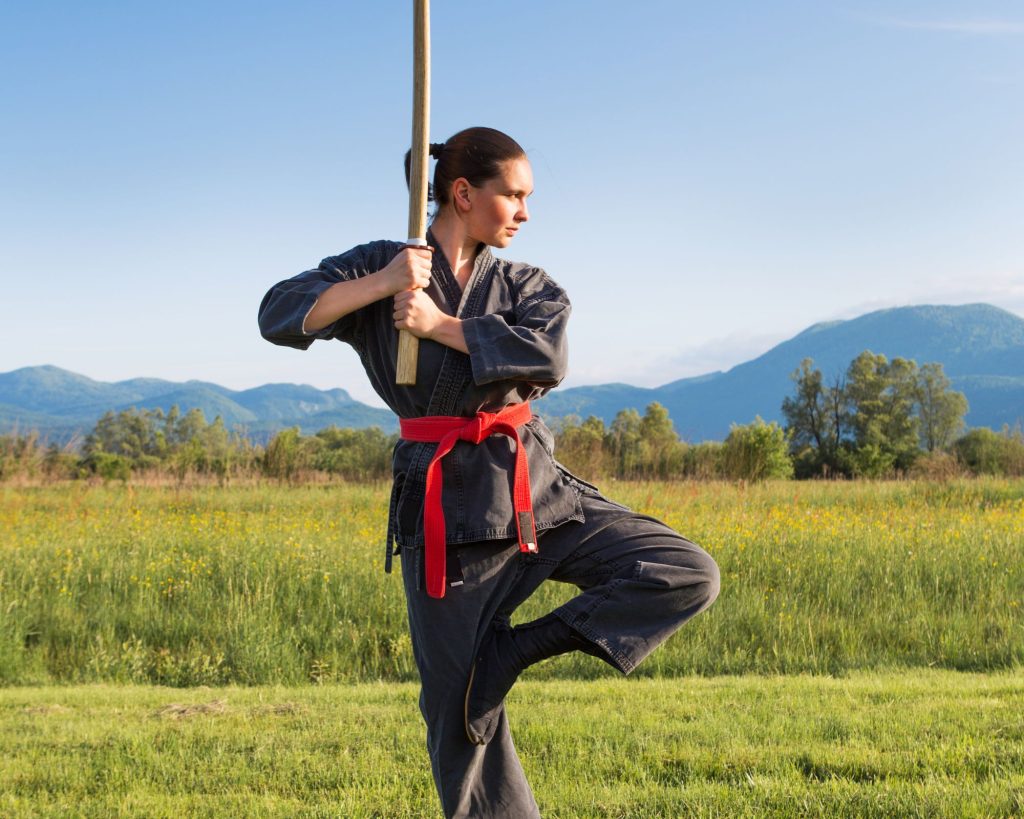
Ninjutsu is a complex and fascinating martial art with a rich history, one that has evolved over centuries.
From its origins as a way of life for Japanese spies and assassins to its current practice as a means of self-defense and personal growth, Ninjutsu continues to inspire and challenge those who choose to study it.
As we have explored, Ninjutsu training encompasses a wide range of techniques, from strikes and grappling to weapons training and meditation. The principles of Ninjutsu emphasize adaptability, awareness, and a deep understanding of oneself and the world around us.
So you can be interested in mastering the physical aspects of Ninjutsu or seeking a path to personal growth and self-discovery. Regardless of what it is you're after, this ancient art has something to offer you.
And with dedication, persistence, and an open mind, you'll be able to nab those benefits for yourself, allowing the practice of Ninjutsu to lead you to a lifetime of learning, growth, and empowerment.
Eager to learn a bit more about Ninjutsu? Check this out!
[author-box-jpx-fitness]
